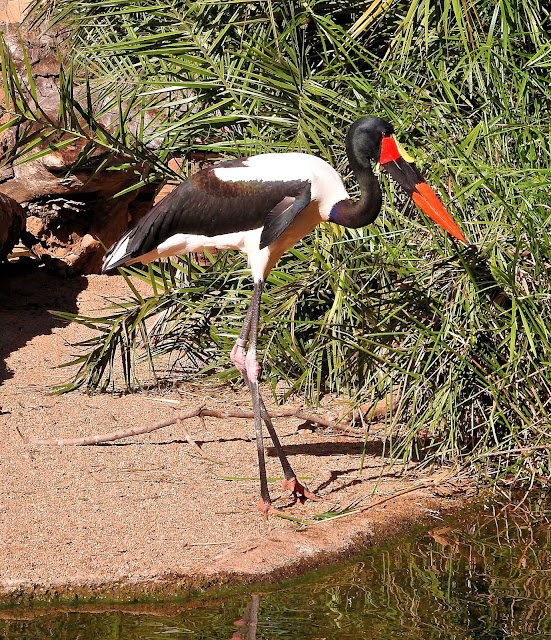This Blog contains Wildlife and Bird Photos from Walks, Safaris, Birding Trips and Vacations. Most of the pictures have been taken with my Nikon P900 and P950X cameras. On the right of the page are labels for each species of Bird/Animal etc. Click on a label to show all of the photos taken for that species. Information for each species is from Wikipedia. Just click on any image for a large picture.
TOTAL PAGEVIEWS
TRANSLATE
Thursday, 25 November 2021
3-6-2019 LINYANTI CAMP, BOTSWANA - ARNOT'S CHAT (Myrmecocichla arnotti)
Arnot's chat ranges in size from 16 to 18 cm (6.3–7.1 in) and weighs around 35 g (1.2 oz). The plumage of the adults is sexually dimorphic; the male of the nominate race is overall black with a white crown and a white patch on the wing coverts. The female is similar but with a black crown and a white (tipped with black) throat and neck. The bill and legs are black. Juvenile birds are like the adults but with white feather tips on the crown or throat instead of fuller white. The male of the race harterti has less extensive white on the wings and a mostly black head with a small area of white on the forehead and above the eye; the white throat of the female is also less extensive than on the nominate.
Wednesday, 24 November 2021
3-6-2019 LINYANTI CAMP, BOTSWANA - HELMETED GUINEA FOWL (Numida meleagris)
This is a gregarious species, forming flocks outside the breeding season typically of about 25 birds that also roost communally. Guineafowl are particularly well-suited to consuming massive quantities of ticks, which might otherwise spread Lyme disease. These birds are terrestrial, and prone to run rather than fly when alarmed. Like most gallinaceous birds, they have a short-lived, explosive flight and rely on gliding to cover extended distances. Helmeted guineafowl can walk 10 km and more in a day. Their bodies are well-suited for running and they are remarkably successful in maintaining dynamic stability over rough terrain at speed. They make loud harsh calls when disturbed.
Their diet consists of a variety of animal and plant foods. During the nonbreeding season, N. meleagris consumes corns, tubers, and seeds, particularly of agricultural weeds, as well as various agricultural crop spillage. During the breeding season, more than 80% of their diet may be invertebrates, particularly arthropods such as beetles. Guineafowl are equipped with strong claws and scratch in loose soil for food much like domestic chickens, although they seldom uproot growing plants in so doing. As with all of the Numididae, they have no spurs. They may live for up to 12 years in the wild.
Males often show aggression towards each other, and partake in aggressive fighting, which may leave other males bloodied and otherwise injured. They attempt to make themselves look more fearsome by raising their wings upwards from their sides and bristling their feathers across the length of their bodies, and they may also rush towards their opponent with a gaping beak. The nest is a well-hidden, generally unlined scrape, and a clutch is normally some 6 to 12 eggs, which the female incubates for 26 to 28 days. Nests containing larger numbers of eggs are generally believed to be the result of more than one hen using the nest; eggs are large, and an incubating bird could not realistically cover significantly more than a normal clutch.
Tuesday, 23 November 2021
Monday, 22 November 2021
Sunday, 21 November 2021
Saturday, 20 November 2021
Subscribe to:
Posts (Atom)

















































